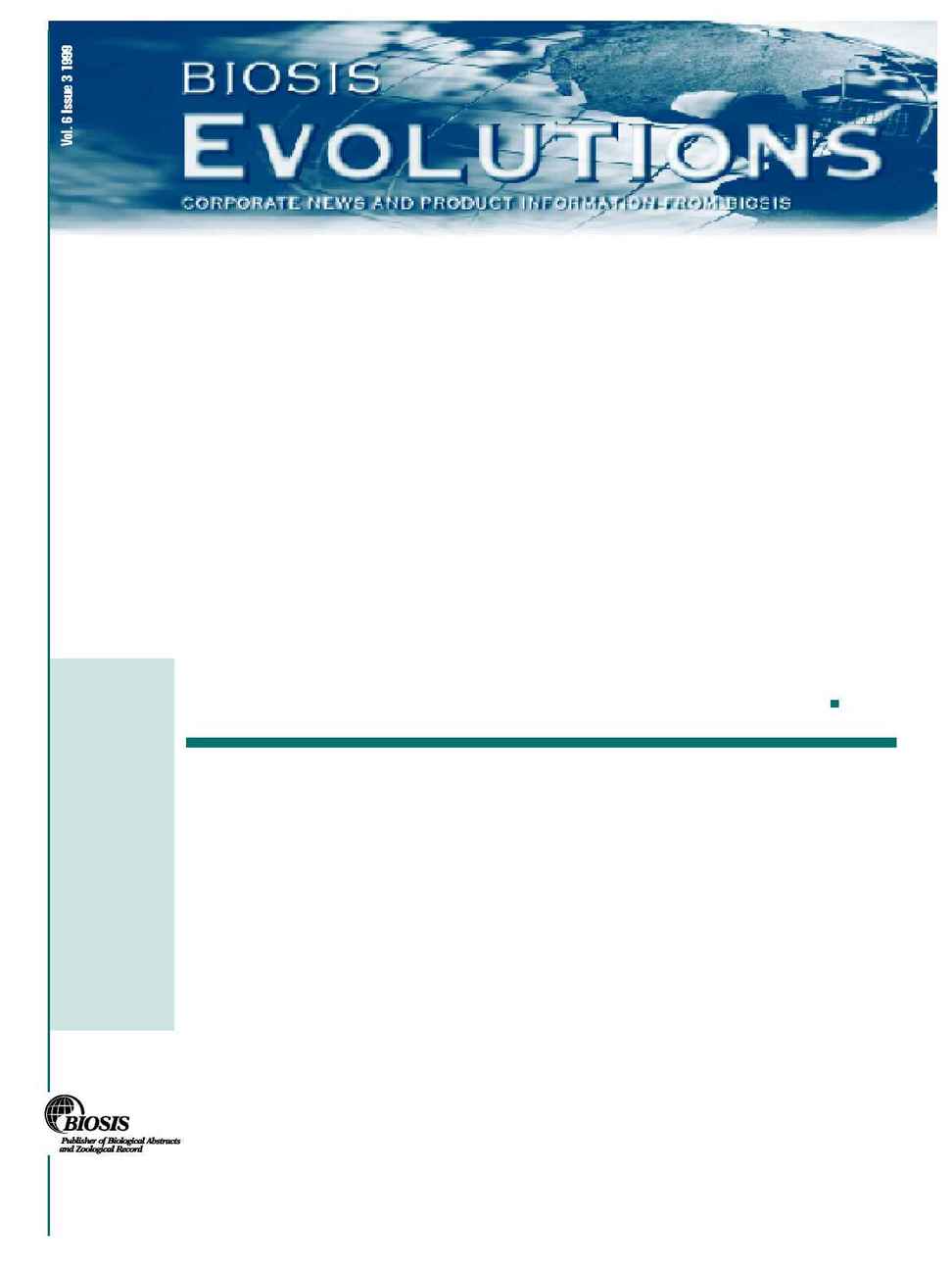
and biochemicals as they occur throughout the database.
From records back to 1993, users can search with CAS
Registry Numbers on BIOSIS Previews
®
, Biological
Abstracts
®
, and Biological Abstracts/RRM
®
(Reports,
Reviews, Meetings)
. CAS Registry Numbers are also
located in BIOSIS Previews in STN back to 1969.
From 1999 forward, you can search BIOSIS databases
using MeSH disease terms from the National Library
of Medicine's Medline database through BIOSIS'
Alternate Indexing field. Try using MeSH disease terms
from your Medline search results in your BIOSIS
searches to find records that Medline does not cover,
such as meeting information and pre-clinical research,
and see how well the databases complement each other.
For more information on how to use CAS Registry
Numbers and MeSH disease terms in BIOSIS databas-
es, see the Search Tips and the database comparison
article elsewhere in this issue of Evolutions.
www.biosis.org
Contents
1
Now, Cross-File
Searching with CAS
Registry Numbers and
MeSH Disease Terms
1
Biomedical Literature
Searching:
A Comparison of
BIOSIS Previews,
EMBASE, and Medline
2
Board of
Trustee Profile:
Robert J. Robbins
3
Search Tips:
When the diagnosis
is cancer... Finding
oncology studies in
BIOSIS Previews
7
Bill Rahe Appointed
Senior Vice President,
Information Technology
8
New Training
Representative
8
PowerPoint Presentations
available on the Web
In this issue of Evolutions, we invite you to broaden your
searches by using two important search terms: CAS
Registry Numbers and MeSH (Medical Subject Heading)
disease terms.
Not only can you search by CAS Registry Numbers and
MeSH disease terms to find relevant research articles,
but you can also use some of the same search
terminology that you use on other databases, such as
Medline or CAS, on BIOSIS databases as well.
Cross-file searching enables users to employ the same
search strategy on different databases. Our users often
search a number of databases in addition to those that
BIOSIS produces. With terms common to many data-
bases, you can search other databases with some of
the same terminology that you use when searching on
BIOSIS databases.
Registry Numbers, which are assigned by the Chemical
Abstracts Society, allow you to search for chemicals
continued on page 4
®
Now, Cross-File Searching with CAS Registry Numbers and MeSH Disease Terms
Biomedical Literature Searching:
A Comparison of BIOSIS Previews, EMBASE, and Medline
Introduction
Multi-database searching is necessary to ensure
comprehensive retrieval. The purpose of this article
is to describe the differences between the biomedical
superfiles BIOSIS Previews, EMBASE, and Medline
and why searches should include all three for
comprehensive retrieval. This article was compiled by
various members of BIOSIS' education staff.
In support of BIOSIS Previews as an important,
recommended database, Dr. Benjamin Bowman of the
Biological-Medical Section of the Max-Plank-Society
in Germany comments that for many researchers
"BIOSIS Previews has become the premier database."
He concludes that many end-users "soon realized that
BIOSIS Previews
not only complements, but frequently
surpasses Medline."
Description of Databases
The primary focus of BIOSIS Previews is preclinical
research information in biology and biomedicine; the
primary focus of Medline is biomedicine, including
clinical medicine; the primary focus of EMBASE is
drug research and pharmacology. Coverage analysis
indicates that BIOSIS Previews, EMBASE, and Medline
are complementary databases, partially due to differ-
ences in their selection policies.
See Table 1 on page 5 for a comparison of the databases.
Coverage
Meetings
BIOSIS Previews
is the most comprehensive source
of references to national and international meetings,
conferences, and symposia in the life sciences. Over
160,000 citations from approximately 1,250 reviewed
meetings are added annually to BIOSIS Previews.
